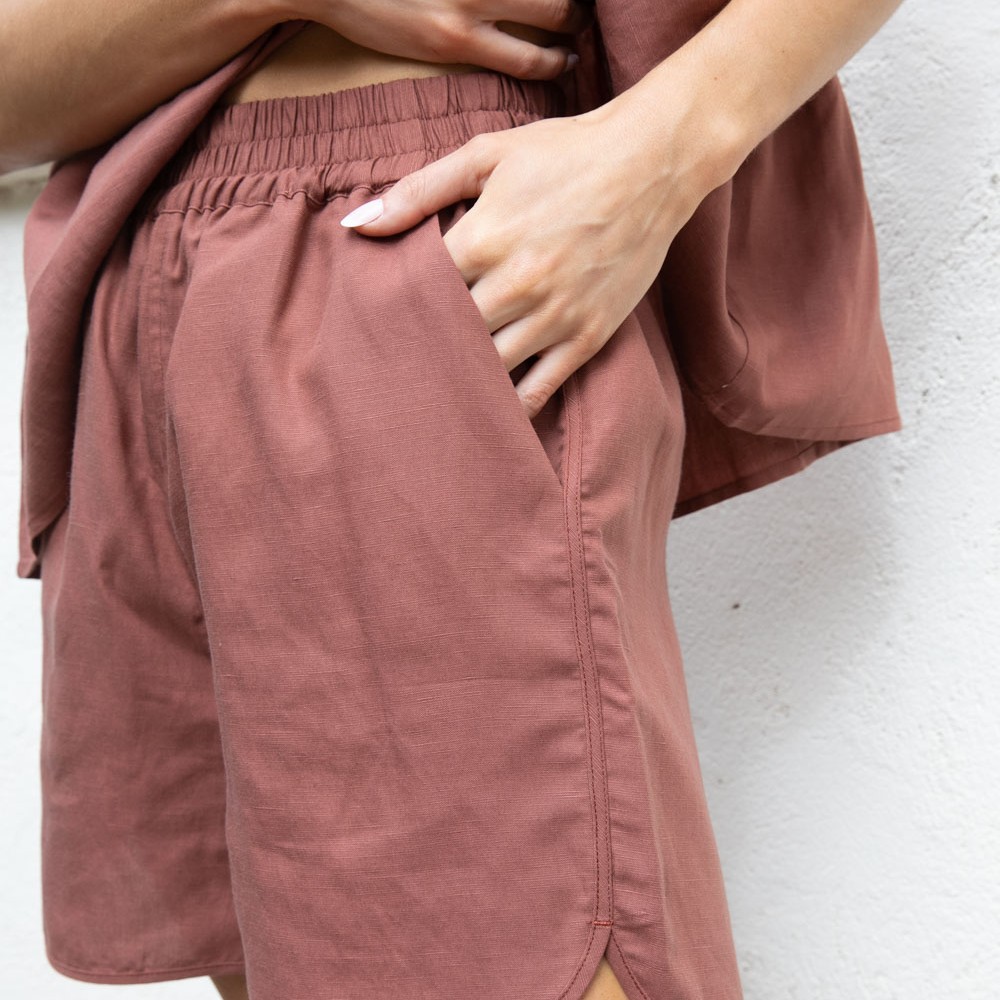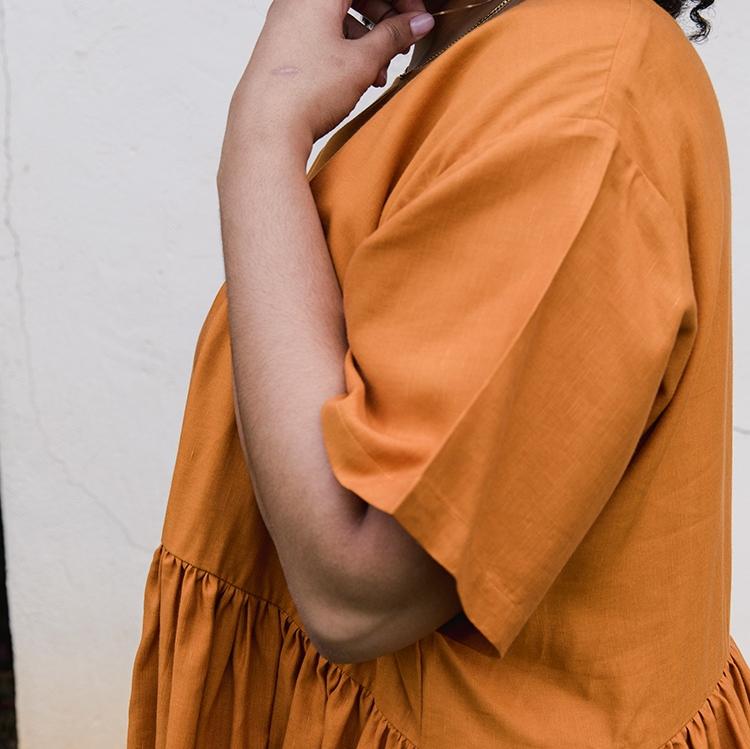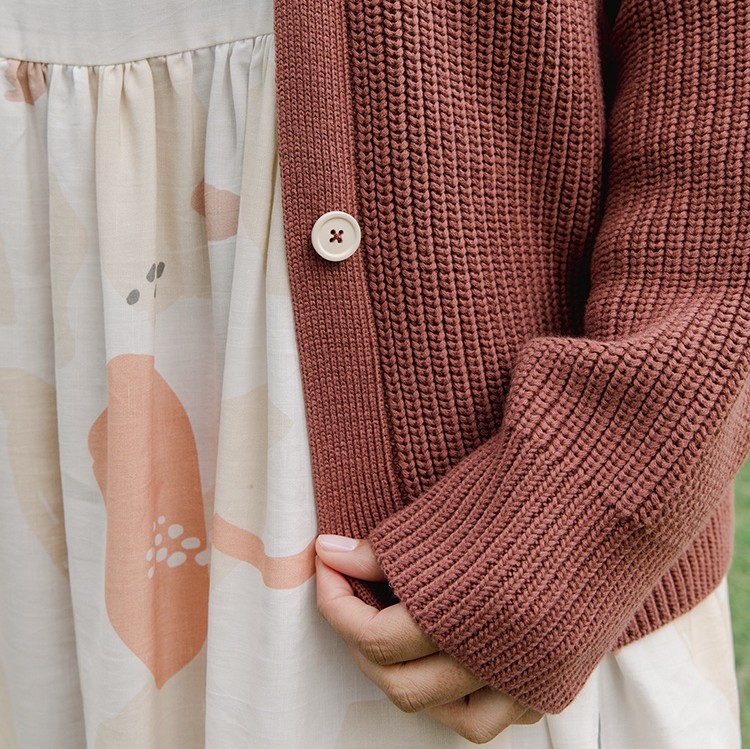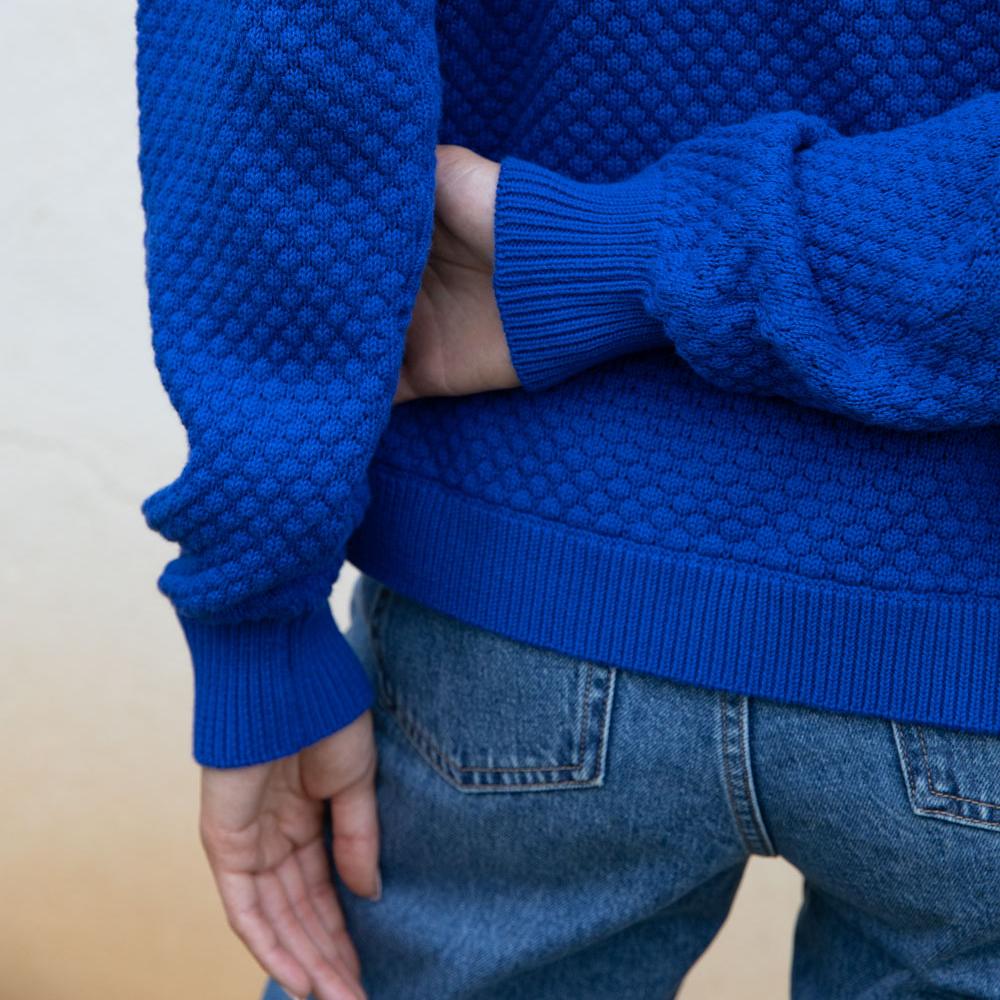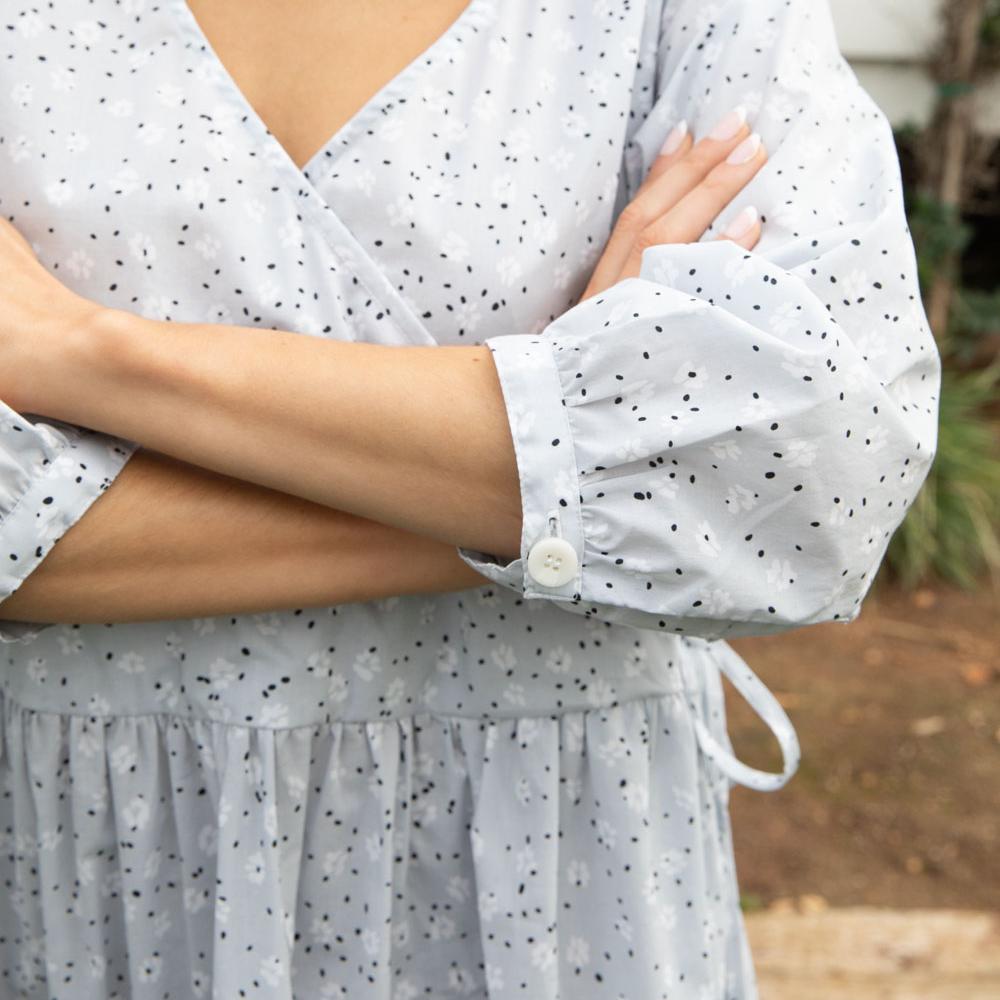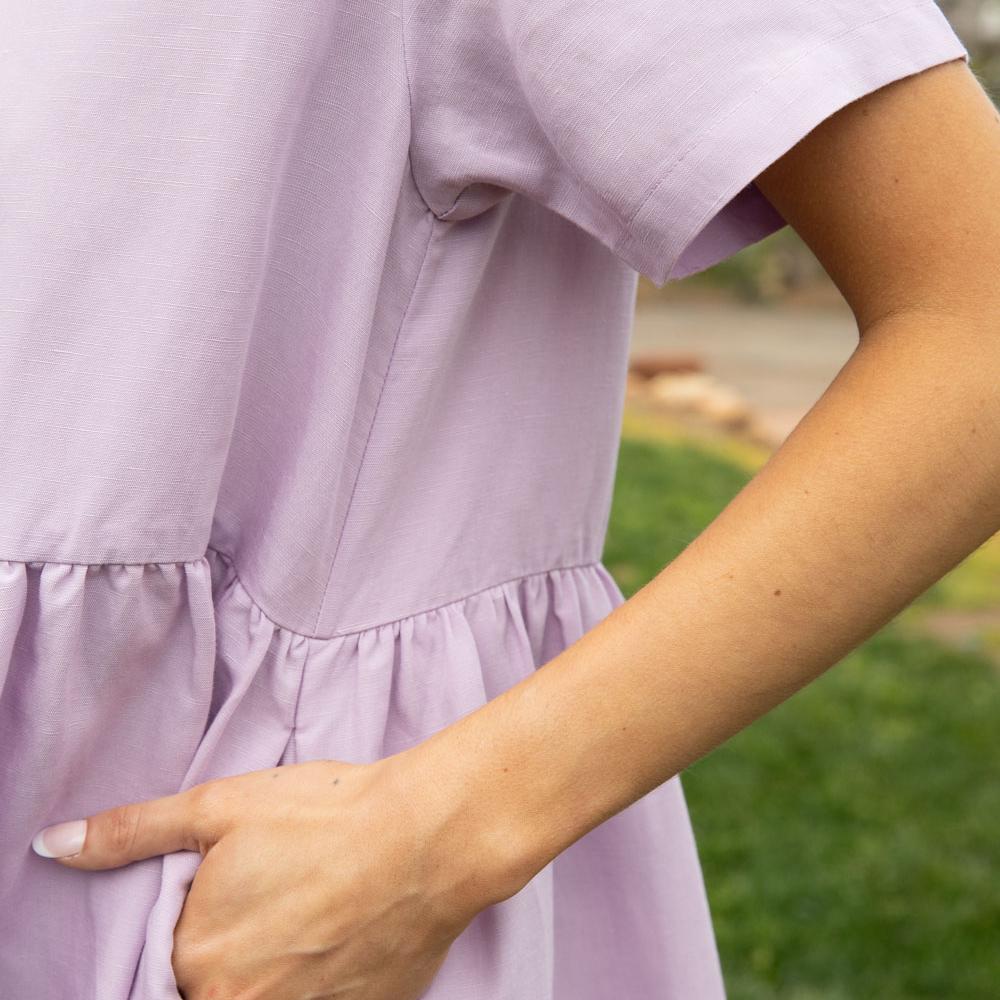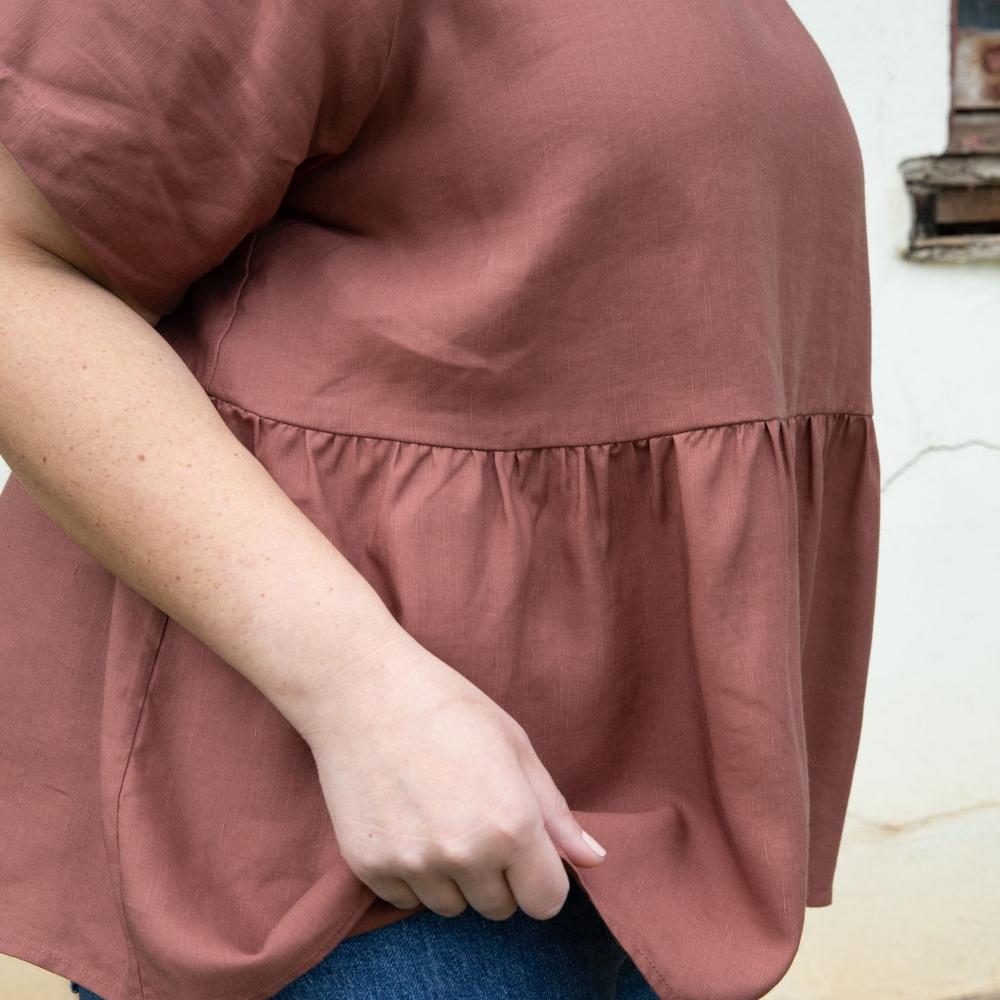Free Shipping Orders $150+
Free Shipping Orders $150+
Meet our Fabrics | Making Your Well-Made Pieces Last a Lifetime
Quality is something you can feel. When you touch your favorite Tradlands sweater, dress, or shirt we hope you feel the quality, construction, and carefully crafted details that go into each piece we make.
Along with the quality in how a garment is made, the true power is in how it lasts. This is why we choose our fabrics as carefully and sustainably as possible. Treading the line between hard-working fabrics that are so often supplemented with synthetic fibers to keep them from breaking down and designing pieces with natural fibers and deadstock fabrics to bring out the beauty and character can be challenging. While we steer clear of those synthetic fabrics, we still put quality first. It's a choice we will continue to make as we trust in the quality and construction of our garments and with this guide, you'll learn about each fabric you see on the site and how best to care for it to make sure it lasts a lifetime.
Caring for Linen + Linen Blends
Linen is a sturdy, breathable fabric with a crisp feel. It’s cool, lightweight, and one of our top sellers for summer pieces. To care for linen properly, be sure to always hand or machine wash as gently as possible with cold water. Tumble dry on low or hang to dry.
We recommend only washing when absolutely necessary. This fabric gets softer and has that “lived-in” feel over time and will break in and potentially fade if washed too often. You can leave this item unpressed for a more natural, worn appearance, or press with low to medium heat steam to rid the fabric of wrinkles for a more professional appearance. Linen is not a particularly elastic fabric and when washed, it may appear to have shrunk, but with medium heat steam after a wash, it will return to the size it came in. Taking these steps and care tips will help maintain the strength and integrity of the garment.
A tip we've learned about Linen and Linen Blends to avoid washing is to hang the garment somewhere in your bathroom while you shower before wearing the item. The steam from the shower helps iron out those wrinkles with little to no effort on your part! Once you're done in the shower, lightly pull or tug at the garment where any wrinkles remain and let it air dry while you continue to get ready. By the time you're ready to put on the garment, it will be in nearly perfect shape without the rough washing cycle or time constraint!
Caring for Cotton Canvas
Canvas is a true hardworking material. It’s stiff at the start and only gets better with time. The hardy fabric is long-lasting when taken care of and maintenance for Canvas is fairly easy as well.
To best care for your canvas pieces, always use mild soaps if they are needed. Water should be cool, at the most lukewarm. You can use a damp cloth to gently spot clean by working the stain or dirt out in circular motions. If you need a full wash, you can machine wash on cold or hand wash in cool water. We recommend our canvas items be hung or air-dried only. Canvas is a hard-working and long-lasting fabric, so we suggest washing only when absolutely necessary to maintain the strength and integrity of the garment.
Caring for Cotton + Cotton Blends
Cotton seems to be a crowd favorite. It feels great, looks great, and is relatively easy to care for since it’s a much more commonplace fabric. Highly absorbent, breathable, and durable, cotton is one of our favorites too.
To care for your cotton or cotton blend items, machine wash with cold water and tumble on warm or air dry to avoid breaking the fibers down and potential shrinking. As with almost all fabrics, washing and drying often will break them down over time - wash only when necessary to ensure the fabric and colors last. Keep in mind that cotton and cotton blends are also susceptible to pilling when under a lot of friction. We do our best to choose fabrics that won’t change but be cautious with lots of repeated friction directly onto the clothes.
Caring for Wool + Wool Blends
Wool is a closet staple for anyone who experiences fall or winter weather, and it's beloved by many for its beautiful, natural properties. This warm, insulating fabric is durable and wrinkle-resistant.
To take great care of your wool and wool blends, hand wash in cool water with a mild detergent that is safe and/or recommended for wool. Avoid scrubbing or irritating the fabric too much while washing. Instead, use your hands to dunk the item in the water and then using a squeeze and release technique to wet it fully and integrate the detergent. Let it soak for a bit, remove from the water and press down on the piece with a dry towel. Gently stretch the garment back into its original shape and leave it flat to dry. You can press with steam once it’s fully dry to finish the look. Wool is hardy and resistant to soil and odors so wash only when absolutely necessary to maintain the strength and integrity of the garment.
Caring for Alpaca + Alpaca Blends
Alpaca is uniquely beautiful and strong. It’s extremely insulating, water-resistant, and wrinkle-resistant. Our Alpaca blends are thick, heavy, and very warm. Keep in mind, Alpaca has a natural tendency to be a bit more “raw” or “natural” feeling than cotton and can be itchy at first. Most people don’t have an issue with this but those with sensitive skin may need to wear a thin layer underneath until they become used to the feel of the fabric.
To care for your Alpaca or Alpaca blend items you’ll want to work them similarly to the Wool and Wool Blend items you have. Hand wash in cool water with a mild detergent that’s safe for wool. Submerge it in the water and squeeze and release to get the item fully soaked and to allow the detergent to penetrate the fibers. Let it soak, remove from the water and press down on the garment with a dry towel. Gently pull the garment back to its original shape and leave it flat to dry. You can press with steam once it’s fully dry to finish the look. Just like wool, Alpaca is hardy and resistant to soil and odors so wash only when absolutely necessary to maintain the strength and integrity of the garment.
Caring for Tencel + Tencel Blends
Tencel is known by many for the drape it offers. It’s a truly flattering fabric on nearly every body type. It’s so versatile and we love working with it when designing new styles. It resists wrinkles well and is quick to dry - unlike other fabrics.
To care for your Tencel or Tencel blend garments, we suggest hand washing or machine washing in cold water with a gentle detergent (if necessary). After washing gently, drip dry if possible, but line drying will also work. For most Tencel, there may be a small amount of shrinkage after the first wash but from there on, it should not shrink. If you need to touch up the fabric you can use an iron on warm - anything hotter will scorch the fabric. Tencel is a beautiful fabric and while we can't reiterate this enough, wash only when absolutely necessary to maintain the strength and integrity of the garment.
Storage Tips for Long-Lasting Clothes
When it comes to storing or hanging well-made clothes, it's simple but does need to be repeated sometimes. For sweaters, especially cotton and cotton blends, if you are storing them for any length of time (when they are in-season or out), it's best to keep them folded and stacked. They should not acquire any wrinkles that last longer than a few seconds after unfolding them but by folding them and keeping them this way, it avoids sagging or drooping from being on a hanger too long.
Cotton, after being washed and worn a lot, can sometimes stretch and lose its shape. To avoid this, keep these items folded so they maintain the shape and fit you love for years.
When hanging and storing other pieces, for us that's mostly linens, light cottons, and Tencel garments, hanging these is often best. It prevents wrinkles that drive people crazy and maintains the shape almost perfectly. We recommend using smooth, wooden clothes hangers instead of plastics that may catch or snag the fabric when removing them or putting them away. There's nothing worse than a snag right in the shoulder of your favorite piece that everyone can see!
Finally, whenever you're packing or storing items in boxes or totes, always check to ensure they are sealed as tightly as possible to avoid any moisture that can cause mold and a horrible odor. We recommend if you do store items this way to be extremely picky about the container or box you choose. Otherwise, we recommend keeping them in your closet, boxed away, but still open to the air of your normal home settings. This keeps the box and garments inside from temperatures fluctuating too much and causing issues or fiber breakdowns.
General Washing Tips for Responsibly-Made Clothes
We know, we know, it sounds like a broken record, but you should only wash your clothes if absolutely necessary. By that we mean a clear stain or odor coming from the garment that needs to be dealt with. We find that lazy washing is the number on cause of issues in longevity with our pieces and many others like ours. Not all washing machines and dryers are created equally and some are much rougher on clothes than others. Not to mention the water in your area may be harder or more mineral-based which can lead to a number of issues with longevity in your garments.
If you do need to wash, wash on the coolest and most gentle setting for almost all garments. Sure, if you're washing stinky, sweaty gym clothes, wash with warmer water and a rougher cycle to make sure they are cleaned through and through, but unless you're wearing your Linen Dress or Cotton Sweater for a triathlon, they do not require the same attention and are better off because of it!
When washing, we also hope you'll consider placing delicate items like linen or linen blend garments into a mesh garment bag to wash as it won't end up stretched out around the center of the washing machine and be pulled or warped after the wash. Putting like items into their own mesh bags to wash is a brilliant idea.
This also makes a difference when washing items with buttons, zippers, or other decorative pieces that could get snagged, chipped, or ripped from the garment entirely during the wash cycle. If you're not able to get a mesh washing bag (or a few!) we also recommend washing clothes inside out. This can help avoid the ruined pockets on the outside or snagged buttons too.
Finally, wash like items and colors whenever possible. Yes, your parents were right when they said you should sort your laundry if you care about it. And if pieces you're buying are slow fashion and responsibly made, they're likely a larger investment piece that you'll want to take care of. Wash similar colors, like whites, brights, and darks together. Wash all denim together and only the denim. Wash delicate items with other delicate items. You get the idea.
Cold, gentle, and hanging dry are the three most important parts of washing garments like ours. Hand-washing is even better but we realize not everyone has the time or energy to make that happen. Washing like items and colors will avoid bleeding, staining, or other issues associated with fabric colors.
In the end, every piece you purchase should be treated as an investment. These items were not simply made to sit in a box or hang in a closet. They are made to be worn, worn well, and worn often, and taking care of them in between each wear makes the world of difference in how they look through their lifetime and how they last.
Discover the premium fabrics used in every Tradlands piece on our "Meet Our Fabrics" page. Learn about our high-quality, sustainable materials like soft cotton, smooth Tencel, and luxurious linen. Our commitment to using ethical and eco-friendly fabrics ensures that your wardrobe is both stylish and responsible. Shop our collection today and feel good about the clothes you wear.


